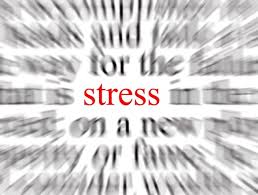If you are starting the new year with a resolution to get fit, it's worth remembering that patterning new behavior takes time. A few years ago, at a time in my life when I was feeling particularly burned out, I happened to pick up a book about Qigong (pronounced "chee kung"), a Chinese method for building and balancing "life energy" through ritualized exercise. The "Qi" part of the word represents the vital energy that Taoists believe exists throughout the universe - energy held in perfect balance by the optimal relationship between the opposing forces of yin (soft, feminine, calm) and yang (hard, masculine, energetic). The "Gong" is the part that requires study, practice and training.
At the time I was craving a sense of balance, and the exercises outlined in the Qigong book I bought seemed like something that could help. I also bought some videos so I could see the exercises performed.
One night while I was following the exercises on one video, my younger daughter joined me and halfway through the program, she turned to me and excitedly said, "Mom, my fingers are tingling!"
And while I never had such a visceral response to the exercises, her experience, provoked without any knowledge of what was supposed to happen, proved to my satisfaction that something subtle and real was at work. I tried to develop a consistent practice and succeeded for a while. During that time I felt calmer and more resilient.
But as with so many things that require effort and consistency and time, once my immediate crisis passed I lapsed back into my old patterns and abandoned Qigong.
Recently I happened across something in one of my favorite magazines, Scientific American Mind. In a larger piece about the psychology and neurobiology of happiness was the statement, "Like a drug or a diet, the exercises work only if you stick with them." Right. I'd sort of forgotten that.
The piece also suggested that timing is important when trying to adopt new behaviors. I know that from the number of times I quit smoking before it finally stuck. Timing is everything. So with fingers crossed and a sense of hopefulness, today I begin anew.






